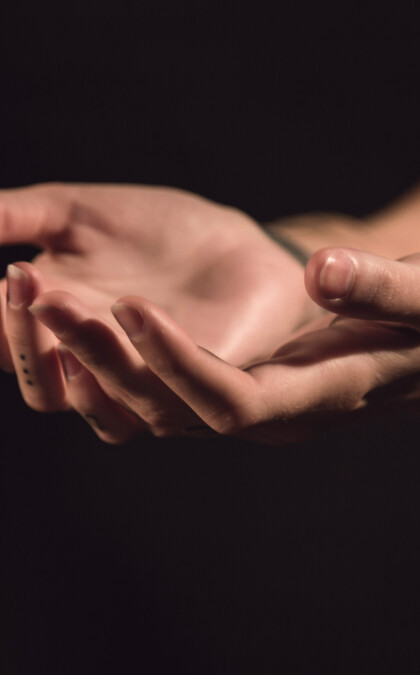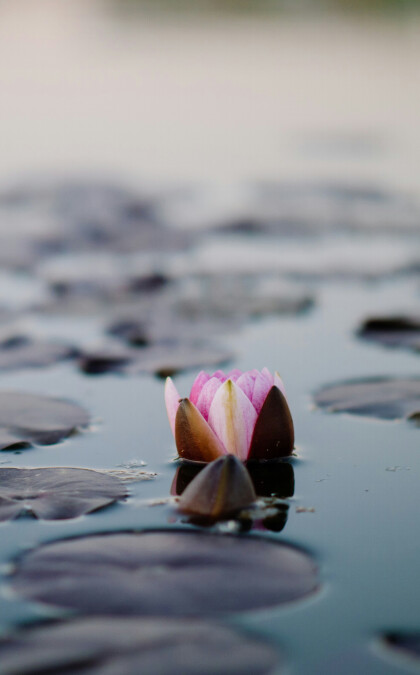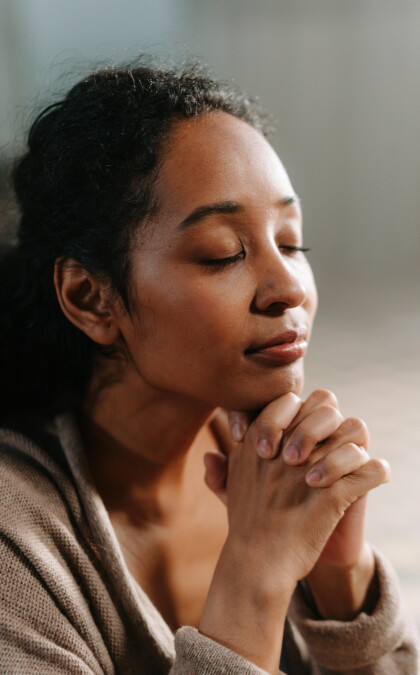Ways of prayer within different religions
Praying is a worldwide phenomenon that is seen in all religions. Even people who claim to be non-religious, pray every now and then. A little prayer meant for a higher power or yourself. Ways of prayer can differ quite a bit within religions!

To whom do they pray?
Even within one religion the ways of prayer can differ a lot. For example some christians use their own words to pray, while others use a prayer that has been formulated in the past by someone else. But if you take in to consideration all the different religions, the differences in ways of praying are much bigger.
Buddhists, for example, do not pray to a god but to ‘enlightened beings’. The three enlightened beings that they speak to in their prayer are Buddha, Dharma and Sangha. They also turn prayer wheels while praying. Inside these wheels are rolls of paper with prayers in them. By turning the prayer wheels, they send the prayers out into the world.
Native Americans or First Nations people, have pre written prayers that they use. They pray, among other things, to the ‘great spirit’. They also follow rituals in which they dance. These dances can in a sense also be seen as prayers. They also often sing their prayers.
Monotheistic religions
A religion in which the followers believe there is only one God, is called monotheistic. Mono means one and theistic comes from theo, meaning God. Between the three largest monotheistic religions, Islam, Judaism and Christianity, there are also differences in ways of prayer. We’ll go into more detail on this later. It is good to know that there is a lot of diversity within the religions that are cited. These are the guidelines that are often followed, but not always. A religion often consists of several denominations. People often pray differently within the different denominations. Culture and background also influence their prayer.
What do these religions mean?
A refresher on the three major monotheistic religions:
Islam
Judaism
Christianity
Islam
Someone who adheres to this religion is called a Muslim. Muslims believe in Allah and in Allah’s prophets of which Muhammad is the greatest. They see the Quran as the word of Allah.
Judaism
A person who adheres to this religion is called a Jew. Jews believe in the God of their forefathers. They also call Him the God of Abraham, Isaac and Jacob. They see the Tanakh as the word of God. The first three books of the Tanakh are important to them, they are called the Torah.
Christianity
How often do they pray?
Now let’s look at how these three different religions differ in ways of prayer.
Islam
Judaism
Christianity
Islam
Throughout the day, a Muslim prays five times: before sunrise, in the middle of the day, late afternoon, after sunset, and late at night. Furthermore, there are two common optional prayers. One of these is often prayed between the first two of the obligatory prayers and one between the fourth and fifth.
Judaism
Jews pray three times throughout the day. Morning, afternoon and night. They also pray before and after a meal if bread was a part of the meal. In some situations, they pray an extra prayer in addition to the morning prayer.
Christianity
Most Christians do not believe that you have to pray at a certain time. There are many times when it is customary to pray. Most Christians pray before a meal and, depending on the denomination, pray after eating. It is also customary to pray before going to sleep. Many Christians take time for God at a random or planned time of the day, when they do this, they also pray.
Fasting
Before you read the comparison between the religions, it is good to know what fasting is. When you fast, you refrain from doing something you normally do every day. This can be eating, using social media or watching TV. The most common of these is refraining from food. The reason we cover it in this article is that within the three religions, prayer plays a major role in fasting.
Islam
Judaism
Christianity
Islam
The Muslims’ fixed fasting period is quite well known; Ramadan. Ramadan starts on April 1 and ends on April 30. During that period, between sunrise and sunset, they abstain from a number of things, including eating and drinking. The goal is to grow in spirituality, purify oneself and give thanks to Allah. Muslims also fast outside of Ramadan. This can be done, for example, to receive forgiveness for sins or because it is a special day in Islam.
Judaism
The Jews have one day in the year on which they all fast; Yom Kippur. The exact date varies from year to year. On this day, they abstain from several things, including eating and drinking. The purpose of fasting can be different for the Jews from time to time. Some reasons for fasting can be to have visions, to avoid wars, or to mourn the death of a king or prophet.
Christianity
The fixed period of fasting among Christians is also known as Lent. These 40 days are a preparation for Easter. Originally, christians refrained from food during this period, except on Sundays because Sunday is seen as a feast day and then there is no need to fast. Today, during fasting many Christians refrain from what they normally spend (a lot of) time on on a daily basis. Often this is food or part of it such as meat or sweets. Something you also see a lot these days is Christians fasting from social media. The time they normally spend on this, they spend seeking God, praying and reading the Bible. The reason behind it can also be different. For example, you can fast to repent of your sins, to ask for an answer from God or to spend time, for example, doing volunteer work.
Clothes and objects
Islam
Judaism
Christianity
Islam
It is appropriate for men to wear loose-fitting clothes. This clothing should cover their body from above their navel to over their knees. The clothes must be clean and tidy.Women wear clothes that cover the entire body while praying. This should be thick and not transparent. Also, the clothing should cover all but the hands and face of the Muslim woman. Normally, the clothing should not show the shape of the body, but this is allowed during prayer.A Muslim performs his prayer on a rug on the floor. They can use dhikr beads, a beaded necklace. That necklace helps them pray.
Judaism
Men cover their heads with a kippah, they do this during the day and also when praying. During their morning prayers, they wear a tallit, a scarf that is worn over the head. However, they only wear them when they are married or when they turn 13. They also wear tefillin, small boxes on prayer belts that they tie around their hands and forehead.Tzitzit, memorial tassels, are attached to the tallit. This tzitzit is also attached to other clothes and they also wear them throughout the day. They also often hold a prayer book or scripture. Women are to always cover their heads with a scarf, also when they pray.
Christianity
Christians are not required to dress or use specific objects when it comes to praying. Most Christians pray in the clothes they wear every day. Some women do choose to cover their heads when praying. Christians from the Catholic denominations use the rosary for a particular prayer.
Posture
Islam
Judaism
Christianity
Islam
While praying, the Muslim performs a number of movements. This starts with standing. Halfway through the prayer, the Muslim is in a kneeling position; toes, knees, palms, nose and forehead should touch the ground. At the end of the prayer, the Muslim is in a position where he is on his knees. Exactly how the poses and movements are done, differs per denomination.
Judaism
When a Jew prays, while standing, he makes a repetitive motion, moving his upper body from front to back. This is not a mandatory move, but it is often done.
Christianity
The posture of a Christian does not matter much, but there are things that you see a lot. For example, when praying, Christians often fold their hands and close their eyes. Some Christians kneel and others raise their hands. It’s really just what they feel comfortable with.
Important places of prayer
Islam
Judaism
Christianity
Islam
When Muslims pray, it doesn’t matter where they are, as long as the place is clean. They regularly pray alone, but there are also general places where Muslims gather to pray. The most famous location of this is a mosque. The Muslims believe that if you pray in a group, your reward will be multiplied by 27. In Makkah there is a large Kaaba where every Muslim should go once in their life if they can. People pray here too.
Judaism
Jews too can pray to G-d any time of the day (they never write, out of respect, the full name) and also anywhere. They also often pray together, for example in a synagogue or study house. They believe it is better to pray in a group of 10 men or more than alone. A very common place to pray is the Wailing Wall. There are always people praying there. Take a look at the Wailing Wall live.
Christianity
Like Muslims and Jews, Christians can pray whenever they want. The location also doesn’t matter. The church is an important place of prayer, which is also called the ‘house of prayer’. The Catholic movement has a chapel, a small prayer house. Christians pray alone as well as together.
What stands out?
If you put the three greatest monotheistic religions side by side, it is noticeable that one religion is less connected to rules and rituals. Christianity. For Christians there is much more freedom to organize their prayer life in their own way. There are traditions but not specifically prescribed laws about how and when to pray. This has everything to do with Jesus. Christians believe that through Jesus we can get closer to God. To be able to build a personal relationship with God that does not depend on the form but on the heart.
Do you pray?
Do you yourself ever pray? To whom or what do you pray? We are curious!
Do you want to pray, but don’t know how? Send us a message and our e-coaches will help you on your way. You can also send a prayer request here and we will pray for you personally. The team behind Jesus.net are Christians themselves. We pray to God and Jesus.

How to pray?
Let prayer become a reality in your life and that become able to say that you are in contact with God!




